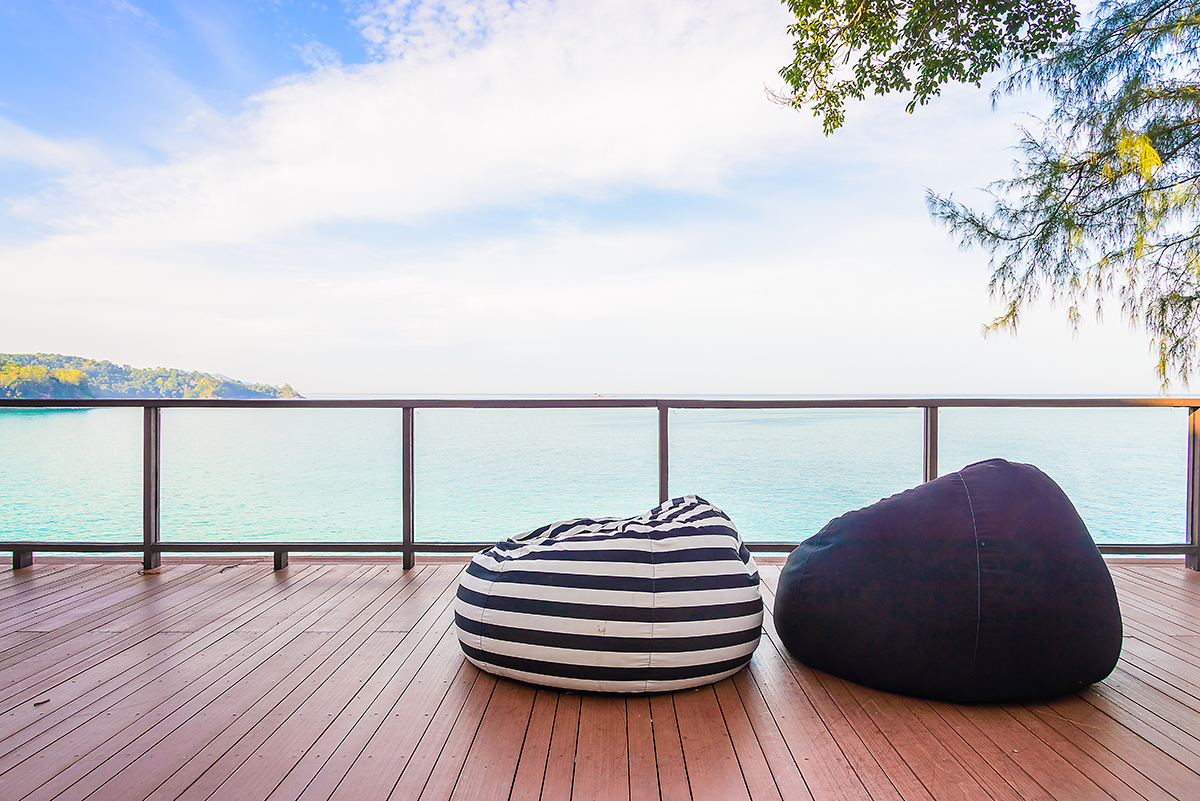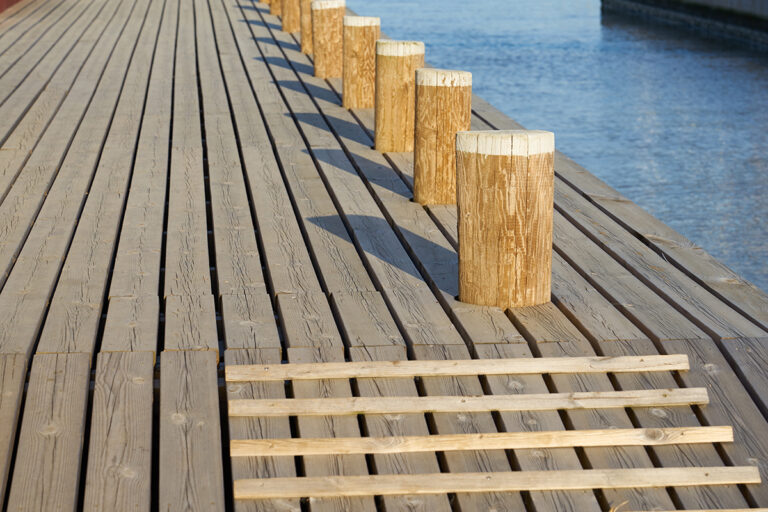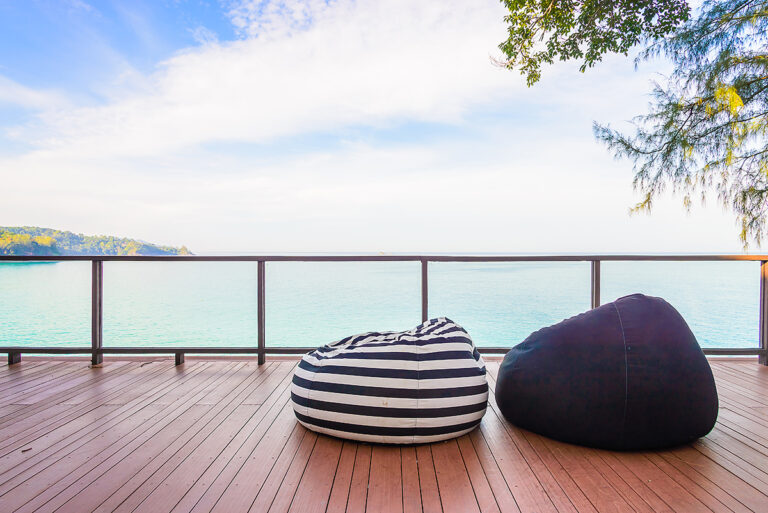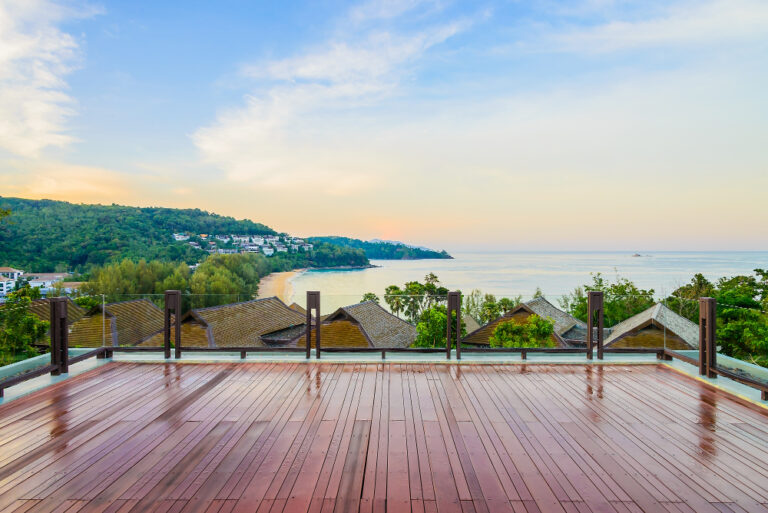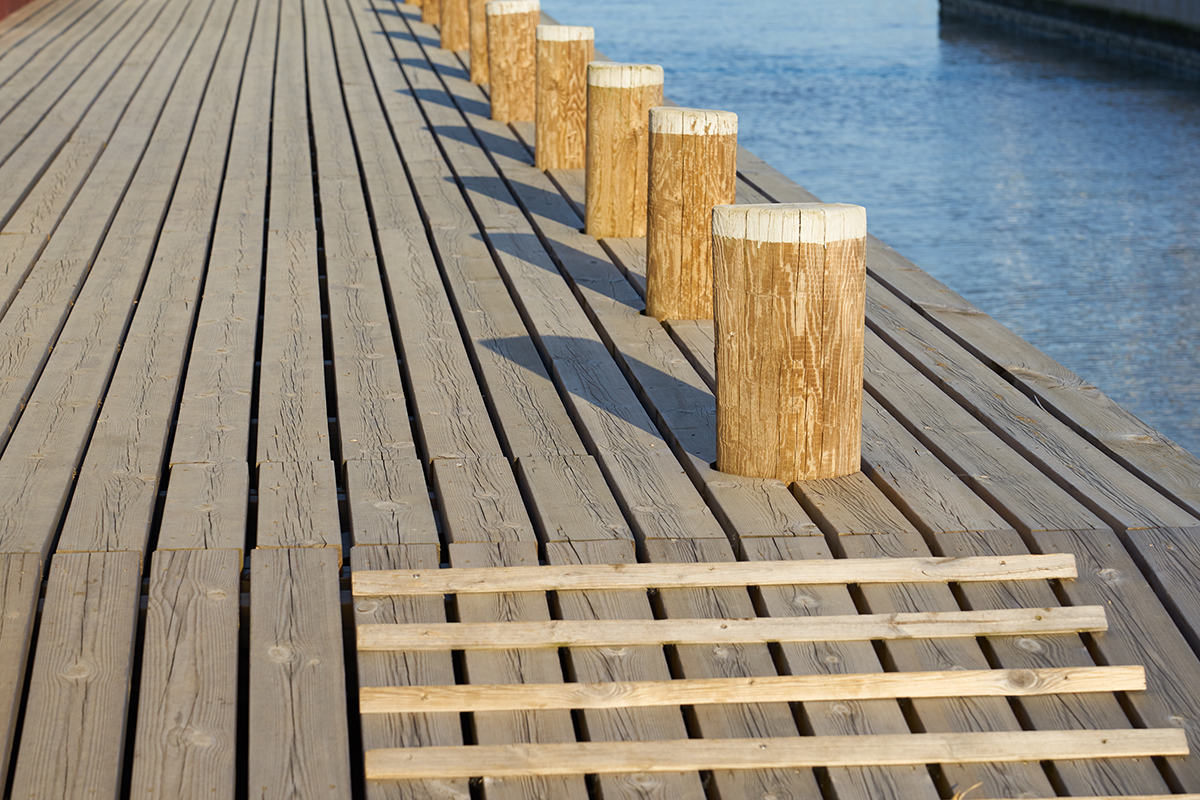
Garapa Decking vs. IPE Wood Decking – Which is Right for You?
When searching for exotic hardwood for your deck project, homeowners often wonder which one is better, IPE or Garapa Wood? This is a common query that can even stump seasoned homeowners. Well, both are considered high-density tropical hardwood species widely used for commercial and residential projects, delivering outstanding quality and long-lasting decks. However, opting for a suitable wood is a crucial decision that affects the appearance and functionality of your property. So, the selection for your project relies on your personal preferences and the project’s needs.
In this edition of Brian’s Blog, we’ll break down the differences between Garapa and IPE decking to help you make the right choice with confidence.
Getting to Know Garapa and IPE
Garapa is a high-density hardwood species native to Brazil. Also known as “Brazilian Teak” or “Golden IPE,” this is one of the best decking material options available today. Such exotic hardwood holds a flattened, broad, dense crown and reaches a height of 25–40 m (82–131 ft) with a slightly tortuous and very long trunk with fins at the base. For a long time, this wood was mainly limited to the producing countries. In recent years, exports of semi-finished and finished products have expanded to North America and Europe. High in Silica content, like Teak, Garapa provides similar benefits.
IPE wood is a premier hardwood sourced primarily from Central and South America. It comes from the Tabebuia Lapacho Group of Tree Species. The IPE Tree can grow up to 140 to 150 feet in height, while the diameter of its trunk can measure up to 6 feet. Due to its unmatched durability, it has been exported for use in creating decking, furniture, and more.
Garapa Decking Vs IPE Wood Decking
The following are some of the key differences between these hardwoods:
- Visual Differences
One of the most noticeable differences between Garapa and IPE wood decking is their colour variations. Garapa decking varies from yellowish-brown to golden brown, which darkens over time due to its photosensitivity. Due to its reflective properties, sometimes this exotic hardwood shifts from light to dark when viewed from different angles as the light hits its surface. With its beautiful texture and natural grain, such hardwood can be utilized to deliver a modern, sophisticated appearance to your wood decking project.
On the other hand, IPE, also called Brazilian Walnut by the flooring industry, possesses natural color variations that range from dark black-brown to reddish-brown. However, it may also hold yellow to olive-brown tones, allowing you to achieve a classic and timeless outdoor appearance. IPE has a much wider color range than Garapa.
- Durability and Maintenance
When it comes to durability, Garapa wood is a highly durable alternative and can be considered an ideal choice for projects where strength and resilience are required. Like IPE, Garapa is naturally resistant to insects, decay and fire. Due to its high silica content, like Teak, Garapa can hold up to wear and tear from frequent use without splitting or sanding. However, such hardwood demands regular cleaning and annual sealing to maintain its natural color or it can be left to weather to a beautiful silver grey. Garapa and IPE are virtually indistinguishable when left to weather naturally.
IPE hardwood is exceptionally durable and is naturally resistant to termites, rot, and decay. It does not sag, expand or contract like other synthetic decking material. Typically, both Garapa and IPE wood can last 40-50 years or longer when properly cared for. Due to their natural resistance to decay, you don’t need to spend too much time and effort on upkeep. It is important to remember that mold grows on anything, even composite.
Both IPE and Garapa have approximately 20% lower heat retention than composite decking making both products easy to live with on those hot summer days.
- Cost and Availability
With its fine-to-medium texture and straight grain, Garapa hardwood is available in the same dimensions and profiles as IPE but is currently considered a more economical alternative. Garapa is similar in price to low-end composite decking.
So, if you are seeking the benefits historically associated with IPE that exudes sophistication without breaking the bank, Garapa is an ideal option for you.
IPE, on the other hand, is a high-end decking material. Due to its durability and limited supply, it is more expensive when compared with other wood decking alternatives available on the market. IPE is similar in cost to high end composite decking.
Both IPE and Garapa’s longevity and low maintenance requirements can make them a cost-effective option in the long run for those willing to invest upfront.
What Do Both Of These High-Quality Woods Have In Common?
They are natural, renewable and sustainable. Natural wood products and the love we give them keep us connected to nature in a way that PVC or composite imitations just can’t provide. Designers call this Biophilic Design (the psychological benefits of connecting man with nature).
1. Eco-Friendly: Both woods are free of toxic chemicals and do not off-gas harmful substances.
2. Health and Safety: They retain less heat compared to PVC and composite decking, making them safer on hot days.
3. Fire Safety: Both are Class A fire-rated, ensuring added safety for your home.
4. End-of-Life Benefits: At the end of their service life, these hardwoods decompose naturally, leaving no lasting environmental footprint.
Garapa and IPE, while both are stellar hardwood selections, distinguish themselves through their unique advantages and inherent characteristics. Choosing the perfect wood is a pivotal decision, ensuring it aligns with your unique style and specific needs. For exclusive options that best suit your style and requirements, contact Tropical Forest Products.
Get in touch with us today to learn more about our sustainable hardwood options. Together, let’s create a deck that will not only stand the test of time but also enhance your connection with nature.


About the Author
Meet Brian Lotz, General Manager of US Operations, Technical and Environmental Compliance Director for Tropical Forest Products and industry Influencer. With over 40 years of experience in the exotic hardwood business, Brian brings a wealth of knowledge that enhances the company’s commitment to sustainability within the imported and domestic hardwood industry. Brian was responsible for spearheading the 38th FSC Chain of Custody Certification for his company in North America, the Fields to Forests Tropical Reforestation Program and the TFP Legal Lumber “Due Care” Compliance Program. As we explore the impact of super-durable tropical hardwoods on multiple industries, Brian’s insight offers a unique lens, underscoring the harmonious interplay between skillful artisanship, biophilic design and sustainable ethos.

Receive The Latest News
Subscribe To Our Weekly Newsletter

- OUR LOCATIONS
- CONTACT US
- SIGN UP
Stay informed about the latest offers, products and sales
- FIND US
- CONTACT US
- SIGN UP

